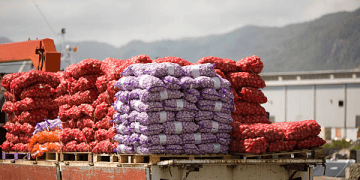Raw food exports have experienced a significant increase in the current fiscal year, with a 42.39% rise in the first two months compared to the same period last year. The value of these exports reached $1.01 billion in July-August, up from $710.65 million during the corresponding months of the previous year, according to the Pakistan Bureau of Statistics. For FY24, raw food exports amounted to $8 billion, a notable increase from $5.8 billion in the preceding year. This surge has contributed to higher prices for food items domestically due to supply and demand imbalances. The rise in exports has continued for 13 consecutive months, even amidst record-high food inflation.
The government has permitted the export of sugar despite an average retail price of Rs160 per kilogram. In the first two months, sugar exports reached 86,148 tonnes, a 160.26% increase compared to 6,146 tonnes during the same period last year. The majority of this sugar has been exported to Afghanistan. Rice exports have also seen substantial growth, with a 98.58% increase in the first two months of FY25 compared to the previous year. Basmati rice exports saw a 136.19% increase in quantity and a 103.63% increase in value. Non-basmati rice exports increased by 95.16% in value and 64.44% in quantity.
This growth is attributed to strong performance in markets such as the EU, Africa, ASEAN countries, and GCC nations, along with the establishment of a Minimum Export Price and enhanced compliance with Sanitary and Phytosanitary standards. The rise in export figures has led to a sharp increase in the average price of basmati rice, which has risen to Rs400 per kilogram from Rs150, affecting domestic consumer purchasing. Meat exports have also grown by 2.43% in the first two months of FY25, supported by new market openings, increased participation by exporters, and additional slaughterhouse approvals. The average price of buffalo meat has doubled from Rs700 to Rs1,400 per kilogram, while chicken prices have also reached new highs.
Vegetable exports, particularly onions, have increased by 56.73% in July-August FY25 compared to the previous year, and fruit exports rose by 11.20%. However, exports of fish and its products, spices, oil seeds and nuts, and leguminous vegetables have seen declines. In contrast, food product imports have decreased by 18.15% to $1.06 billion in the first two months of FY25 from $1.30 billion during the same period last year. The decline is attributed to reduced imports of infant baby milk, soybean oil, palm oil, sugar, and pulses. However, imports of spices and dried fruits have risen by 59% and 88%, respectively.
Get the latest supply chain report news at The Supply Chain Report. Learn more about international trade with tools from ADAMftd.com.
#FoodExportTrends #MarketUpdate #PriceIncrease #TradeStatistics #EconomicImpact

















